Inteligencia artificial en la enseñanza-aprendizaje de la Química: tendencias, desafíos y oportunidades educativas. Revisión narrativa
Palabras clave:
inteligencia artificial generativa; educación química; laboratorio virtual; simulación educativaResumen
Introducción: Existe una creciente incorporación de herramientas basadas en inteligencia artificial (IA) en el ámbito educativo; sin embargo, en el campo específico de la didáctica de la Química, este continúa siendo un espacio emergente y poco explorado. MAteriales y métodos: Esta revisión narrativa tiene como objetivo identificar las tendencias, desafíos y oportunidades pedagógicas asociadas al uso de IA en la enseñanza-aprendizaje de la Química, a partir del análisis crítico de estudios seleccionados entre 2020 y 2025, recopilados desde la base de datos Scopus. La metodología empleada se sustenta en el enfoque QR (Question and Reproducibility), orientado a garantizar rigor y transparencia en las revisiones narrativas. Resultados: Los hallazgos enfatizan en que la enseñanza de la química con IA incorpora plataformas para prácticas remotas, simulaciones y evaluación automatizada, consolidando una simbiosis docente–tecnología. Sin embargo, persisten desafíos en infraestructura, alfabetización digital y precisión de modelos, además de consideraciones éticas en el manejo de datos. Discusión: A pesar de ello, la IA ofrece personalización de contenidos, desarrollo del pensamiento crítico y acceso democratizado a laboratorios virtuales, fomentando la colaboración y la retroalimentación en tiempo real. Estas innovaciones redefinen el rol del docente como mediador y promueven un aprendizaje autónomo, ético y participativo. Conclusiones: Se concluye que la inteligencia artificial representa una oportunidad transformadora para renovar las prácticas de enseñanza-aprendizaje en química. No obstante, su implementación requiere una mirada crítica, ética y contextualizada, que considere tanto los avances tecnológicos como las necesidades y potencialidades formativas de los actores educativos.
Citas
Amirbekova, E., Shertayeva, N., & Mironova, E. (2023). Teaching chemistry in the metaverse: The effectiveness of using virtual and augmented reality for visualization. Frontiers in Education, 8, 1184768. https://doi.org/10.3389/feduc.2023.1184768
Back, S., Aspuru-Guzik, A., Ceriotti, M., Gryn'ova, G., Grzybowski, B., Gu, G. H., Hein, J., Hippalgaonkar, K., Hormázabal, R., Jung, Y., Kim, S., Kim, W. Y., Moosavi, S. M., Noh, J., Park, C., Schrier, J., Schwaller, P., Tsuda, K., Vegge, T., von Lilienfeld, O. A., & Walsh, A. (2024). Accelerated chemical science with AI. Digital Discovery, 3(1), 23–33. https://doi.org/10.1039/d3dd00213f
Bazie, H., Lemma, B., Workneh, A., & Estifanos, A. (2024). The effect of virtual laboratories on the academic achievement of undergraduate chemistry students: Quasi-experimental study. JMIR Formative Research, 8, e64476. https://doi.org/10.2196/64476
Berber, S., Brückner, M., Maurer, N., & Huwer, J. (2025). Artificial intelligence in chemistry research─Implications for teaching and learning. Journal of Chemical Education, 102(4), 1445–1456. https://doi.org/10.1021/acs.jchemed.4c01033
Blonder, R., & Feldman-Maggor, Y. (2024). AI for chemistry teaching: Responsible AI and ethical considerations. Chemistry Teacher International, 6(4), 385–395. https://doi.org/10.1515/cti-2024-0014
Chen, Y. (2022). The Impact of Artificial Intelligence and Blockchain Technology on the Development of Modern Educational Technology. Mobile Information Systems, 2022, 1–12. https://doi.org/10.1155/2022/3231698
Chiu, M. M. (2021). Transforming education with emerging technologies: Beyond the tool. Journal of Educational Change, 22(3), 411–429. https://doi.org/10.1007/s10833-020-09385-1
Cornelius, R., Cabrol, D., & Cachet, C. (1986). Applying the techniques of artificial intelligence to chemistry education. En T. H. Pierce & B. A. Hohne (Eds.), Artificial intelligence applications in chemistry (ACS Symposium Series No. 306, pp. 125–134). American Chemical Society. https://doi.org/10.1021/bk-1986-0306.ch011
De Jong, T., Linn, M. C., & Zacharia, Z. C. (2013). Physical and virtual laboratories in science and engineering education. Science, 340(6130), 305–308. https://doi.org/10.1126/science.1230579
Demelash, M., Belachew, W., & Andargie, D. (2024). Incorporación del contexto de la vida real en la enseñanza de la química escolar para mejorar el aprendizaje significativo de los estudiantes. African Journal of Chemical Education, 14(3). https://www.ajol.info/index.php/ajce/article/view/276642
Deroncele Acosta, A. (2025). Método QR: Guía paso a paso para escribir una revisión narrativa. https://gigapsico.com/capacitacion/
Dos Santos, D. C., & Eichler, M. L. (2024). A ChatGPT case study on misinformation: Exploring possibilities in chemical education. Revista Virtual de Química, 17(1), 1–11. https://doi.org/10.21577/1984-6835.20240065
European Commission. (2022). AI and education: A guide for policy-makers. https://www.oecd.org/education/ai-education-policy.html
Facione, P. A. (1990). Critical thinking: A statement of expert consensus for purposes of educational assessment and instruction. American Philosophical Association. https://files.eric.ed.gov/fulltext/ED315423.pdf
Feldman, T., & Blonder, R. (2023). Artificial intelligence in chemistry education: A perspective of chemistry teachers. Chemistry Teacher International, 5(2), 123–134. https://doi.org/10.1515/cti-2023-0012
Feldman, T., & Blonder, R. (2023). Artificial intelligence in chemistry education: A perspective of chemistry teachers. Chemistry Teacher International, 5(2), 123–134. https://doi.org/10.1515/cti-2023-0012
Feldman-Maggor, Y., Blonder, R., & Alexandron, G. (2025). Perspectives of generative AI in chemistry education within the TPACK framework. Journal of Science Education and Technology, 34(1), 1–15. https://doi.org/10.1007/s10956-024-10147-3
Fonseca, C. (2024). The use of ChatGPT in Chemistry: the bibliometric analysis. En 10th International Conference on Higher Education Advances (HEAd’24). https://doi.org/10.4995/HEAd24.2024.17276
García, L. M. (2018). Dificultades en la comprensión del lenguaje simbólico en química. Revista Eureka sobre Enseñanza y Divulgación de las Ciencias, 15(2), 2502–2513. https://doi.org/10.25267/Rev_Eureka_ensendivulgcienc.2018.v15.i2.2502
Gonçalves Costa, G., Nascimento Júnior, W. J. D., Mombelli, M. N., & Girotto Júnior, G. (2024). Revisiting a Teaching Sequence on the Topic of Electrolysis: A Comparative Study with the Use of Artificial Intelligence. Journal of Chemical Education, 101(8), 3255–3263. https://doi.org/10.1021/acs.jchemed.4c00247
González, J. P. (2021). La enseñanza de la química: ¿Memorización o comprensión? Educación Química, 32(4), 290–295. https://doi.org/10.22201/fq.18708404e.2021.4.81035
Güth, F., van Vorst, H. (2024). To choose or not to choose? Effects of choice in authentic context-based learning environments. European Journal of Psychology of Education, 39(4), pp. 3403–3433. DOI: 10.1007/s10212-024-00798-6
Heradio, R., de la Torre, L., Galán, D., Cabrerizo, F. J., Herrera-Viedma, E., & Dormido, S. (2016). Virtual and remote labs in education: A bibliometric analysis. Computers & Education, 98, 14–38. https://doi.org/10.1016/j.compedu.2016.03.010
Hu, J., Huang, Z., Li, J., Xu, L., Zou, Y. (2024). Real-time classroom behavior analysis for enhanced engineering education: An AI-assisted approach. Education and Information Technologies, 29(1), 112–130. DOI: 10.1007/s44196-024-00572-y
Kamali, J., Alpat, M. F., & Bozkurt, A. (2024). AI ethics as a complex and multifaceted challenge: Decoding educators’ AI ethics alignment through the lens of activity theory. International Journal of Educational Technology in Higher Education, 21(1), 44. https://doi.org/10.1186/s41239-024-00496-9
Kim, S.-Y., Jeon, I., & Kang, S.-J. (2024). Integrating data science and machine learning to chemistry education: Predicting classification and boiling point of compounds. Journal of Chemical Education, 101(4), 1771–1776. https://doi.org/10.1021/acs.jchemed.3c01040Larrechi, M. S., & Rius, F. X. (1991). Teaching chemistry with expert systems: Systematic chemical separation of cations in aqueous media. Journal of Chemical Education, 68(8), 659–661.
Leite, B. S. (2023). Inteligência artificial e ensino de química: uma análise propedêutica do ChatGPT na definição de conceitos químicos. Química Nova, 46(10), 949–960. https://doi.org/10.21577/0100-4042.20230059
Leite, B. S. (2024). Generative artificial intelligence in chemistry teaching: ChatGPT, Gemini, and Copilot’s content responses. Journal of Applied Learning & Teaching, 7(2), Art. 13. https://doi.org/10.37074/jalt.2024.7.2.13
Lizano, F., & Idoyaga, N. (2025). Teachers’ perspective on the use of artificial intelligence on remote experimentation. Education and Information Technologies, 28(12), 13429–13449. https://doi.org/10.1007/s10639-023-120631
Lyamuremye, A., Niyonzima, F. N., Mukiza, J., Twagilimana, I., Nyirahabimana, P., Nsengimana, T., Habiyaremye, J. D., Habimana, O., & Nsabayezu, E. (2024). Utilization of artificial intelligence and machine learning in chemistry education: A critical review. Discover Education, 3, Article 95. https://doi.org/10.1007/s44217-024-00197-5
Markovnikova, I. A., Likhanov, M. V., & Kurushkin, M. A. (2024). A model for estimating the visual complexity of a molecule using graph theory metrics: An educational perspective. Perspectives of Science and Education, 3(66), 561–575. https://doi.org/10.32744/pse.2024.3.37
Mena-Guacas, A. F., López-Catalán, L., Bernal-Bravo, C., & Ballesteros-Regaña, C. (2025). Educational transformation through emerging technologies: Critical review of scientific impact on learning. Education Sciences, 15(3), 368. https://doi.org/10.3390/educsci15030368
Miller, T. (2019). Explanation in Artificial Intelligence: Insights from the Social Sciences. Artificial Intelligence, 267, 1–38. https://doi.org/10.1016/j.artint.2018.07.007
Montes-Bageneta, R., Pérez, M., & Solís, A. (2020). Uso de inteligencia artificial en laboratorios de química para la sostenibilidad. Química Nova na Escola, 42(3), 45–52. https://doi.org/10.21577/0104-8899.20200045
Morales Álvarez, J. P., Machado Preciado, E. J., Vázquez Morales, G. E., & Castro Miranda, E. G. (2024). La brecha digital en la educación: Desafíos y estrategias para integrar Tecnologías de la Información y la Comunicación (TICs) y Tecnologías para el Aprendizaje y el Conocimiento (TACs) en el entorno escolar. LATAM: Revista Latinoamericana de Ciencias Sociales y Humanidades. https://www.researchgate.net/publication/383887572
Nascimento Júnior, W. J. D., Morais, C. C., & Girotto Júnior, G. (2024). Enhancing AI Responses in Chemistry: Integrating Text Generation, Image Creation, and Image Interpretation through Different Levels of Prompts. Journal of Chemical Education, 101(9), 3767–3779. https://doi.org/10.1021/acs.jchemed.4c00230
OECD. (2019). Principles on Artificial Intelligence. https://oecd.ai/en/dashboards
Park, H. K., & Martin, S. N. (2024). Exploring the role of ChatGPT in science education for Asia-Pacific and beyond: A systematic review. Asia-Pacific Science Education, 10(2), 233–263. https://doi.org/10.1163/23641177-BJA10079
Pence, H. E. (2020). How should chemistry educators respond to the next generation of technology change? Education Sciences, 10(2), 34. https://doi.org/10.3390/educsci10020034
Pereira, A. R., & Ferreira, A. D. Q. (2023). Visualização molecular interativa para situações de estudo. Educación Química, 34(4), 232–242. https://doi.org/10.22201/fq.18708404e.2023.4.83872
Pérez-Rodríguez, M. A., Delgado-Rico, E., & Sánchez-Gómez, M. C. (2022). Realidad virtual y aumentada como recursos para el aprendizaje de la ciencia en educación secundaria. Revista Eureka sobre Enseñanza y Divulgación de las Ciencias, 19(2), 2103. https://doi.org/10.25267/Rev_Eureka_ensen_divulg_cienc.2022.v19.i2.2103
Popenici, S. A. D., & Kerr, S. (2017). Exploring the impact of artificial intelligence on teaching and learning in higher education. Research and Practice in Technology Enhanced Learning, 12(1), 1–13. https://doi.org/10.1186/s41039-017-0062-8
Popenici, S. A. D., & Kerr, S. (2017). Exploring the impact of artificial intelligence on teaching and learning in higher education. Research and Practice in Technology Enhanced Learning, 12(1), 1–13. https://doi.org/10.1186/s41039-017-0062-8
Rojas Vistorte, A.O., Ayala, J.L.M., Deroncele-Acosta, A., López-Granero, C., Martí-González, M. (2024). Integrating artificial intelligence to assess emotions in learning environments: a systematic literature review. Frontiers in Psychology, 15, 1387089. DOI: 10.3389/fpsyg.2024.1387089
Roski, K., Ewerth, R., Hoppe, T., & Nehring, A. (2024). Exploring data mining in chemistry education: Building a web-based learning platform for learning analytics. Journal of Chemical Education, 101(2), 679–689. https://doi.org/10.1021/acs.jchemed.3c00794
Sayán, R. (2024). Estética experiencial y socioformación en la enseñanza de la química: La mediación de la inteligencia artificial. Revista de Educación Estética, 16(1), 34–49. https://doi.org/10.1234/ree.2024.16.1.034
Silva, A. L. da, & Silva, A. C. da. (2023). Inteligência artificial e ensino de química: uma análise propedêutica. Química Nova, 46(10), 949–960. https://doi.org/10.21577/0100-4042.20230059
Tassoti, S. (2024). Assessment of students' use of generative artificial intelligence: Prompting strategies and prompt engineering in chemistry education. Journal of Chemical Education, 101(6), 2475–2482. https://doi.org/10.1021/acs.jchemed.4c00212
Taylor, M.V., Muwaffak, Z., Penny, Matthew R., Szulc, Blanka R., Brown, S., Merritt, A., Hilton, S.T. (2025). Optimising digital twin laboratories with conversational AIs: enhancing immersive training and simulation through virtual reality. Digital Discovery, 4(5), pp. 1134–1141. DOI: 10.1039/d4dd00330f
Uçar, S.-Ş., López-Gazpio, I., & López-Gazpio, J. (2025). Evaluating and challenging the reasoning capabilities of generative artificial intelligence for technology-assisted chemistry education. Education and Information Technologies, 30, 11463–11482. https://doi.org/10.1007/s10639-024-13295-6
UNESCO. (2021). Recomendación sobre la Ética de la Inteligencia Artificial. https://unesdoc.unesco.org/ark:/48223/pf0000381137_spa
UNESCO. (2023). Informe de seguimiento de la educación en el mundo, 2023: tecnología en la educación: ¿una herramienta en los términos de quién? https://unesdoc.unesco.org/ark:/48223/pf0000388894
Uwosomah, E. E., & Dooly, M. (2025). It Is Not the Huge Enemy: Preservice Teachers’ Evolving Perspectives on AI. Education Sciences, 15(2), 152. https://doi.org/10.3390/educsci15020152
Vidhani, D. V., & Mariappan, M. (2024). Optimizing Human–AI Collaboration in Chemistry: A Case Study on Enhancing Generative AI Responses through Prompt Engineering. Chemistry, 6(4), 723–737. https://doi.org/10.3390/chemistry6040043
Wang, L. (2024). From passive learning to autonomy: Rethinking chemistry education through technology. Chemistry Education Research and Practice, 25(2), 250–265. https://doi.org/10.1039/D3RP00254E
Weder, B., Barzen, J., Leymann, F., Salm, M., & Wild, K. (2021). QProv: A provenance system for quantum computing. IET Quantum Communication, 2(4), 171–181. https://doi.org/10.1049/qtc2.12012
Yatani, K., Sramek, Z., & Yang, C.-L. (2024). AI as Extraherics: Fostering Higher-order Thinking Skills in Human-AI Interaction. arXiv. https://arxiv.org/abs/2409.09218
Yik, B. J., & Dood, A. J. (2024). ChatGPT convincingly explains organic chemistry reaction mechanisms slightly inaccurately with high levels of explanation sophistication. Journal of Chemical Education, 101(4), 1685–1692. https://doi.org/10.1021/acs.jchemed.4c00235
Yuriev, E., Wink, D. J., & Holme, T. A. (2024). The dawn of generative artificial intelligence in chemistry education. Journal of Chemical Education, 101(8), 2957–2959. https://doi.org/10.1021/acs.jchemed.4c00836
Zhai, X., & Tan, A.-L. (2021). Science learning in the context of virtual labs and simulated experiments: Fostering students’ conceptual understanding and inquiry abilities. Journal of Science Education and Technology, 30(3), 392–404. https://doi.org/10.1007/s10956-021-09889-8
Descargas
Publicado
Cómo citar
Número
Sección
Licencia
Derechos de autor 2025 Rosa María Elizabeth Sayán-Rivera

Esta obra está bajo una licencia internacional Creative Commons Atribución-NoComercial-SinDerivadas 4.0.
Esta revista proporciona un acceso abierto inmediato a su contenido, basado en el principio de que ofrecer al público un acceso libre a las investigaciones ayuda a un mayor intercambio global de conocimiento. Cada autor es responsable del contenido de cada uno de sus artículos. Los artículos pueden ser inéditos o estar disponibles previamente en servidores de preprints reconocidos por la revista. Sin embargo, no se permite la duplicación de la publicación o traducción de un artículo ya publicado en otra revista o como capítulo de un libro.
This journal provides immediate open access to its content, based on the principle that providing the public with free access to research supports a greater global exchange of knowledge. Each author is responsible for the content of each of their articles. Articles may be previously unpublished or available on preprint servers recognized by the journal. However, duplication of publication or translation of an article already published in another journal or as a book chapter is not permitted.
Esta revista oferece acesso aberto imediato ao seu conteúdo, com base no princípio de que oferecer ao público acesso gratuito à pesquisa contribui para um maior intercâmbio global de conhecimento. Cada autor é responsável pelo conteúdo de cada um de seus artigos. Os artigos poderão ser inéditos ou estar previamente disponíveis em servidores de preprints reconhecidos pela revista. No entanto, não é permitida a duplicação de publicação ou tradução de artigo já publicado em outro periódico ou como capítulo de livro.



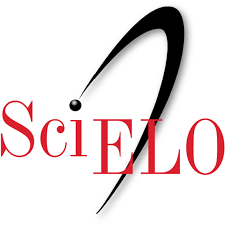






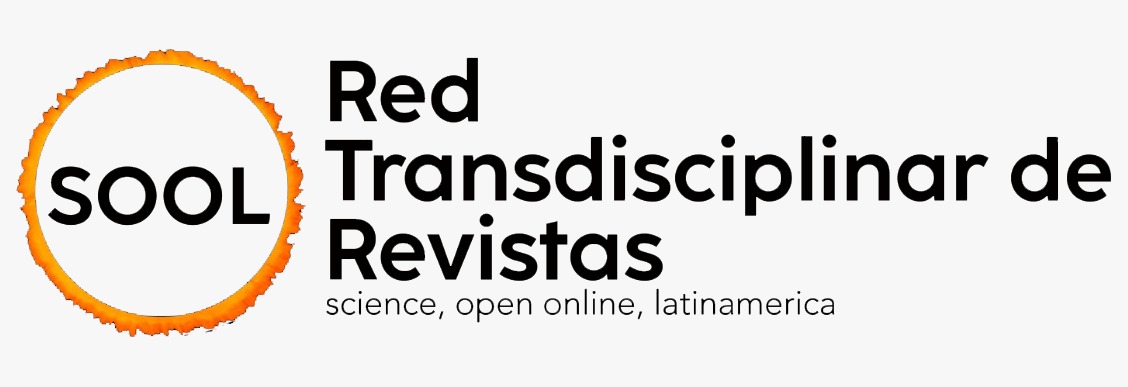
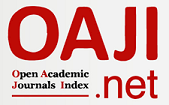

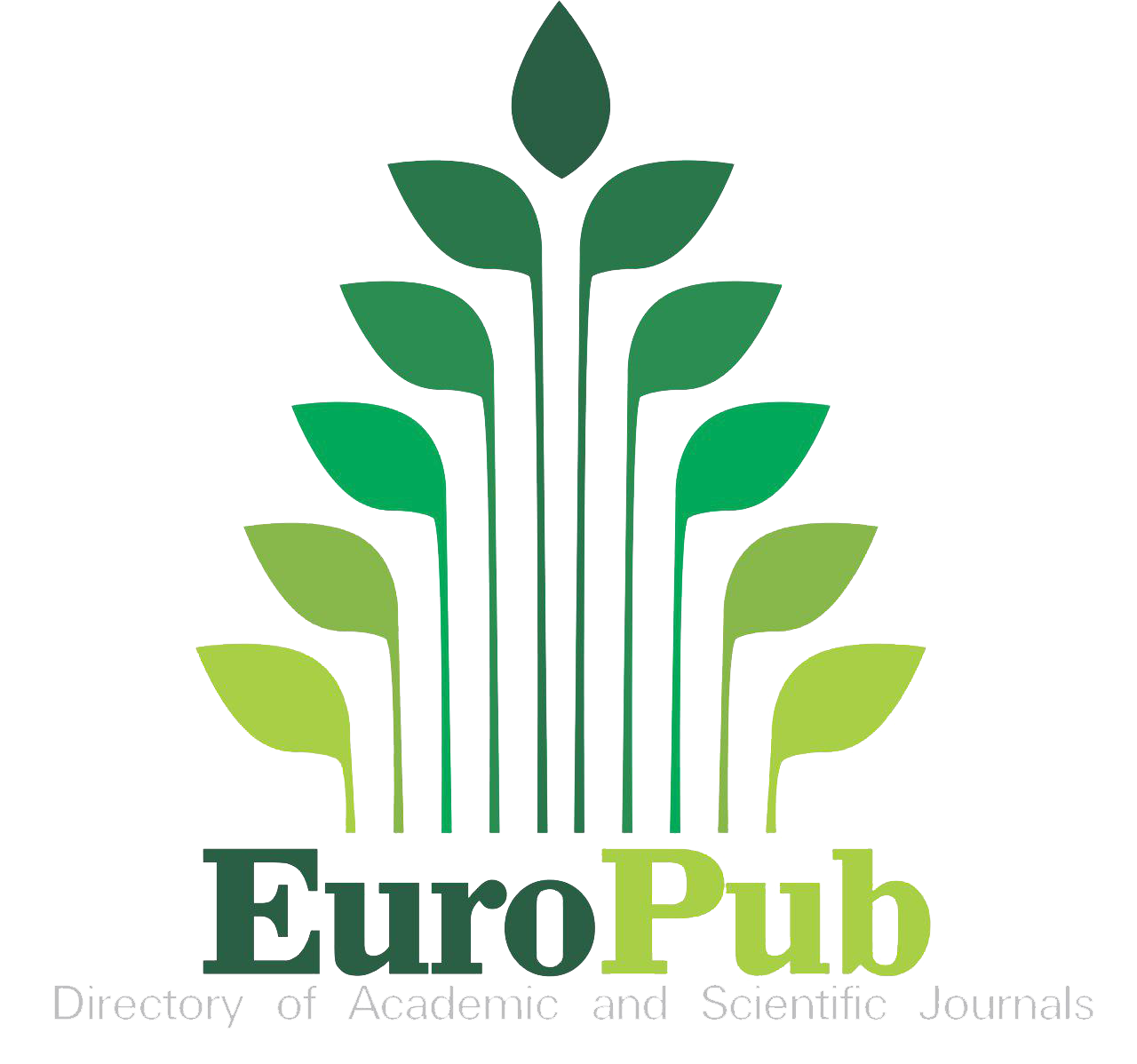






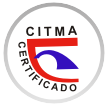






 Universidad de Oriente
Universidad de Oriente 